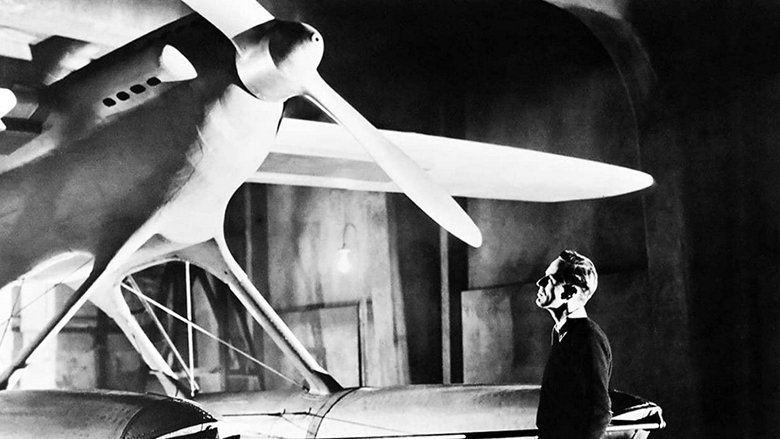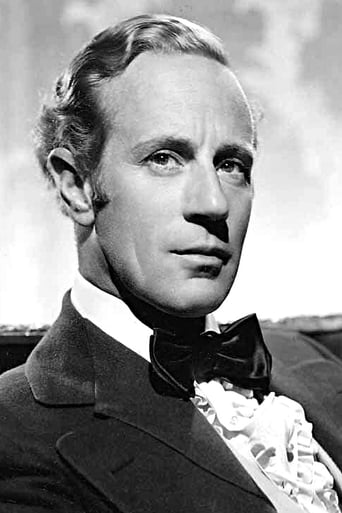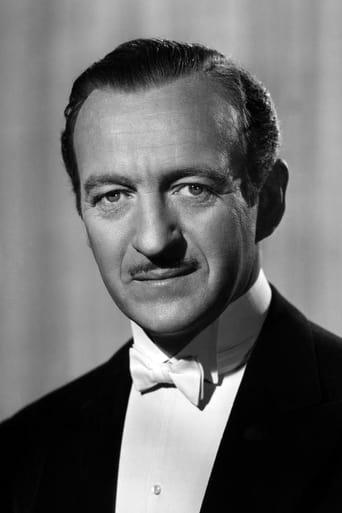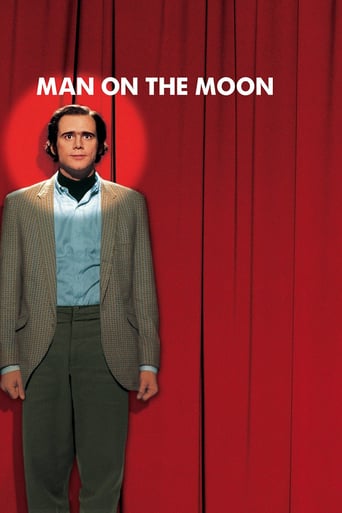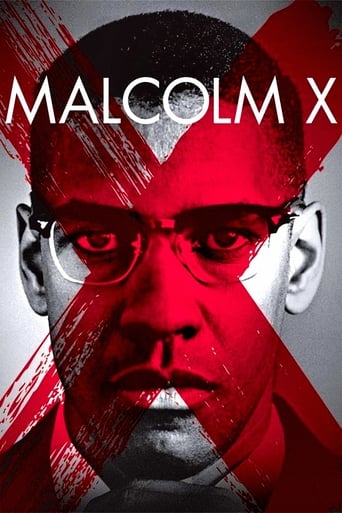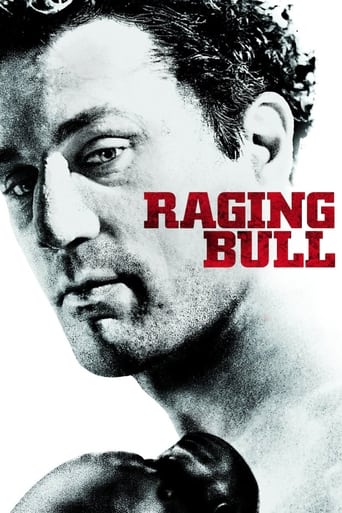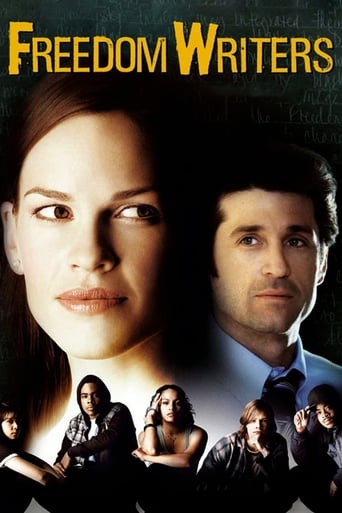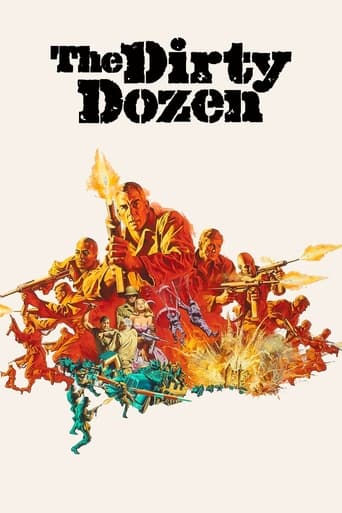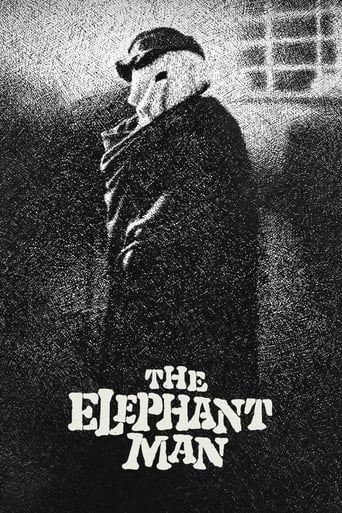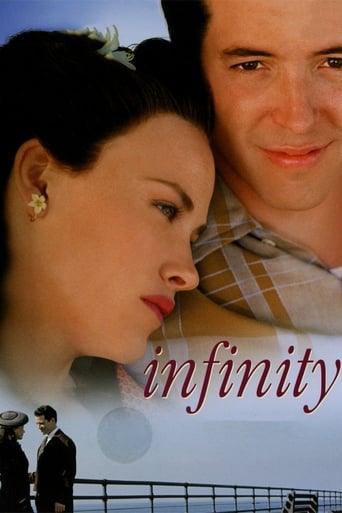The First of the Few (1943)
This 1942 fictionalized biopic chronicles the true story of how two of the most remarkable men in aviation history - visionary Spitfire designer R.J. Mitchell and his test pilot Geoffrey Crisp - designed a streamlined monoplane that led to the development of the Spitfire.
Watch Trailer
Free Trial Channels
Cast


Similar titles
Reviews
Really Surprised!
Intense, gripping, stylish and poignant
Brilliant and touching
The performances transcend the film's tropes, grounding it in characters that feel more complete than this subgenre often produces.
Leslie Howard's last film was one that he starred in, produced, and directed, in England called The First of the Few; in the U.S. called Spitfire. The British title relates to Winston Churchill's words: "Never in the field of human conflict was so much owed by so many to so few."It is the story of R.J. Mitchell, who designed the Spitfire, a plane which helped win the Battle of Britain.The Spitfire had several advantages. It was difficult to shoot down since the planes flew higher and faster than what the Germans had. Also, it was easy for the Spitfire to refuel since they were on home ground, whereas the Germans had to return to Germany to refuel. In part, it was designed by Mitchell due to his concern that the British military could not stand up to the German military. Mitchell's brilliance was in combining elements that had been invented earlier to make one fabulous plane. He had some false starts, but he ultimately succeeded. In 1931, his design, S.6B, won the Scheider Trophy Competition and started things off. The plane later broke the world speed record.We don't learn too much about Mitchell himself. He was dedicated to his work to the point of exhaustion, so it's doubtful he had a hot social life. Unlike Howard's upper class, even-tempered Mitchell, the real Mitchell was athletic, lower class, and easily angered. Howard made his acting choices deliberately as Mitchell's family spent a lot of time on the set.Howard costars with David Niven as his pilot, who provided some lighter moments. And if you like that sort of thing, there is a lot of aerial footage.Mitchell died of rectal cancer in 1937 at the age of 42, so he didn't see all of his plane's success. Howard died in 1943 on KLM Royal Dutch Airlines/BOAC Flight 777, which was shot down over the Bay of Biscay by the Luftwaffe as the plane flew from Lisbon to the UK. He was 50.This is a strong propaganda film, well acted and well directed. It was filmed at an active fighter station, Ibsley, and the extras were real Battle of Britain fliers, and the film also showed the real people working on the plane.Anyone interested in Mitchell, his son wrote two books: R.J. Mitchell: World Famous Aircraft Designer, and R.J.Mitchell: Schooldays to Spitfire.As an aside, because this was a propaganda film, Niven was released from his MGM contract in exchange for distribution rights. When Samuel Goldwyn saw the film, he realized Niven was in a supporting role and re-edited the movie, cutting 40 minutes.This is a similar story to what happened to Tyrone Power when MGM borrowed him for Marie Antoinette. When Zanuck saw that Power played a supporting role, he never lent him out again, and Power was offered some huge films as in 1939 he moved into the top 10 box office stars. I think Niven was luckier, though he and Goldwyn fought for years.
This is a gem of war time epic that ranks close to the classics like the "Sink the Bisbark", and the "Dam Busters".The story is about the history of development of one of the greatest war time fighter plane, the Supermarine Spitfire, told as a story of Reginald Joseph Mitchell - the designer of the Spitfire from his formulative days of designing race planes to the eventual design of the plane while fighting his own ailment of cancer. Mitchell barely survived to see his plane fly and incorporated into the Royal Air Force. It's a stroke of luck for England that Mitchell came up with the design, because it was the only type air craft that can match the technology of the German Luftwaffe.Some artistic license has been taken to make the story to be fit for a movie. Probably half of the stories in the movie is fiction, but it still conveys the visionary genius of the man who was years ahead of his time.First of the few points to Mitchell in that he was the first of the men Churchill mentioned in his famous speech "... never have so many owed so much to so few." regarding the Battle of Britain.The format is somewhat dated, but this is a great movie to watch if you're an aviation buff or war time epic fan, and is recommended for viewing.
It is ironic that Leslie Howards last film would be about the fate he would suffer soon after. Howard shot this film before flying into the war and his death mere months later.This biography of RJ Mitchell who created the famous British fighter is documented in this movie. In support is David Niven in one of his better more serious film roles. The film made in 1942 is definitely war propaganda. Still it tells an important story.Mitchell knew he was ill, but was a man on a mission to get the Spit Fighter complete before he died. While the movie is not real clear on Mitchell's illness, the fact is that he did die within a year of his getting the first Spitfires built.A good cast puts together a good film which elevates Mitchell (Howard) into a key historic position. The real Mitchell died of Cancer within a year of the plane design completion and the first major orders by the British Government.
David Niven is definitely channelling old friend Errol Flynn here, in the role of the irrepressible Geoffrey Crisp! One assumes the part was created to afford a little feminine light relief, since the central character is -- inconveniently for the standard narrative curve -- already happily married as a young man when we first meet him, and omits to look elsewhere... At any rate, Niven-as-narrator is a charming scamp, and refreshingly the plot refrains from taking the obvious path of marrying him off to his 'snapdragon', R.J.Mitchell's formidable secretary Miss Harper. The relationship between the two eventually softens in their mutual affection for Mitchell, but never becomes romantic.But it is Leslie Howard in the central role who undoubtedly owns the film; perhaps unsurprisingly, given that he is credited as both director and producer, but it is a typical 'quiet' performance that effortlessly overshadows Niven's endearing antics. As one bemused company director remarks after an encounter with the character's unassuming forcefulness, "But I thought you said he was *shy*..?" The decision to open the film with extended sequences of anti-British propaganda sourced from Britain's enemies -- from Goebbels to Lord Haw-Haw -- is a striking one, and more effective than any tendentious rhetoric on "The last Bastion of Liberty" in establishing the concept of an existential threat. The riposte is made chiefly by a montage of quintessentially English images; 'this is what we are fighting for'. And the context is set in the Battle of Britain, with an overworked handful of pilots and Spitfires flying again and again against vastly outnumbering waves of attackers.It is not, however, really a 'war' picture. If anything it is a biography of the Spitfire as much as of its designer, and the story effectively ends pre-war in 1938, with the commissioning of the first planes. If it has a fault, it is that I felt the film was perhaps a little didactic, an instructional piece of history rather than an emotionally engaging human drama; we witness Mitchell's career frustrations and achievements (oddly, it is never made clear just why Crisp blacked out with almost fatal results in that early seaplane competition; one would assume it was from the hitherto unexpected g-forces produced by banking at such record speeds, but the issue, subsequently a well-known fighter pilot phenomenon, is simply dropped unexplained)... but it is only at the end of the story, where Mitchell in effect deliberately sacrifices his own chances of survival in order to get the Spitfire design finished, that we are actually drawn into the tensions of the tale rather than merely observing. The enclosing narrative device is clever in that Mitchell's fate is left carefully ambiguous at the start; since neither the contemporary audience nor modern viewers are likely to be familiar with the history of this 'back-room' figure, the ultimate outcome remains 'up for grabs', as it were, and the hero's choice an active one until the end.Rosamund John provides effective support as loyal wife Diana, despite the absence of conflict between them to provide a cheap motor for their scenes together (particularly memorable is a scene in the kitchen where Diana has to reinforce her husband's faltering resolution to maintain his integrity at the cost of his employment... while trying to get him to chop the parsley!) Scenes in pre-war Germany are handled with a light touch that distinguishes the German pilots and designers from the politicians responsible for their deployment, and with an ironic comedy that recalls "Pimpernel Smith", Leslie Howard's earlier potent propaganda vehicle. Script writer and ubiquitous character actor Miles Malleson can be glimpsed in a typical cameo role, and David Niven, while always entertaining, shades his character towards maturity while representing a whole generation of ex-WWI flyers who found themselves cast adrift at the end of hostilities. It was the ending, with his now-middleaged RAF officer taking to the air in person and then pursuing the German pilot who had shot down one of his squadron-mates. that I found a little trite.But the final imagery, as the Spitfires fly away from the camera into an opening canyon of gilded cloud, is magical, aided by William Walton's soaring music.Overall I enjoyed and would recommend the film, but felt it not to be entirely the dramatic equal of the other test-pilot picture with which I always confuse it, David Lean's 1952 "The Sound Barrier", nor of Howard's previous wartime excursion "Pimpernel Smith". It is undoubtedly a pity, however, that Leslie Howard's directorial career was cut short by enemy action; in his choice to serve his country in wartime cinema rather than pursue a Hollywood career, he proved himself to be a weapon of considerable effectiveness, and it is ironic in the context of this film that, as in the case of R.J.Mitchell, it proved to be a choice that may well have cost him his own life. As a swansong, the role is poignant but also appropriate.


